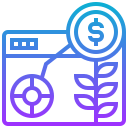
Eco-Friendly Blog Content Creation
Eco-friendly blog content creation is a modern approach to digital publishing that focuses on minimizing environmental impact while maximizing the educational and inspirational value of each post. As more readers and companies prioritize sustainability, adapting your content creation process to be eco-conscious is no longer optional—it’s an expected standard. This page explores practical ways to infuse eco-friendliness into every stage of blogging, from idea generation to post-publication, thereby helping bloggers and brands not only reduce their carbon footprint but also appeal to increasingly eco-aware audiences.
Sustainable Topic Research
Exploring Emerging Green Trends
Emerging green trends encompass innovations and developments in eco-design, renewable energy, sustainable fashion, zero-waste movements, and more. By staying updated on these trends, bloggers ensure their content remains relevant and valuable for readers who are actively seeking information on how to live more sustainably. Researching these topics often involves engaging with scientific journals, attending eco-focused webinars, and following thought leaders in the environmental sector. Choosing to spotlight such trends amplifies their reach and reinforces a blog’s commitment to environmental stewardship, encouraging others to do the same through their readership.
Collaborating with Eco-Minded Experts
Collaboration with experts in sustainability bolsters both the accuracy and credibility of blog content. These partnerships may take the form of interviews, guest posts, or content reviews by researchers, activists, and practitioners who are deeply embedded in the environmental field. This approach enriches blog narratives with expert insights, real-world examples, and actionable advice, transforming blogs from simple information portals into powerful educational tools. Furthermore, engaging with experts helps build a network of eco-conscious advocates around the blog and opens new opportunities for promoting collaborative sustainability efforts.
Focusing on Local Environmental Issues
Addressing local environmental issues personalizes the sustainability conversation by linking global ecological concepts to readers’ everyday lives. Writing about community recycling programs, urban gardening initiatives, or regional conservation projects can resonate more deeply than broad international topics alone. By spotlighting local case studies, success stories, and challenges, bloggers bring sustainability down to a practical, actionable level for their audiences. This localized focus also supports grassroots movements and empowers communities to take ownership of their environmental impact, making change more accessible and tangible.
Minimizing Digital Waste through Concise Writing
High volumes of unnecessary digital content contribute to increased energy consumption across servers, storage, and bandwidth. By prioritizing concise, purposeful writing, bloggers limit the data load imposed on digital infrastructure. Carefully editing each post for clarity, brevity, and relevance not only enhances reader engagement but also conserves resources on a macro scale. Every bit of unnecessary data sent, stored, or shared incrementally increases a blog’s carbon footprint, so responsible content creators strive to make each word count for both communication and conservation.
Promoting Actionable Sustainability Tips
Effective eco-friendly blog content empowers readers to adopt greener habits through clear, actionable advice. Rather than simply stating facts about environmental issues, high-impact content illustrates real steps individuals and businesses can take. This might include sustainable shopping habits, DIY eco-projects, energy-saving strategies, or resource-conserving techniques. Practical, step-by-step guidance helps break down the barriers to change and supports readers in transforming concern into action, ensuring that the blog serves as a catalyst for positive environmental behavior.
Using Inclusive and Accessible Language
Sustainability is a universal concern, so eco-friendly blogs must strive for inclusivity in their writing. This involves using clear, jargon-free language to make complex environmental topics understandable for a broad audience. Accessibility also means considering readers with diverse backgrounds, abilities, and learning styles, ensuring everyone can benefit from the information provided. Thoughtfully crafted content helps bridge knowledge gaps and builds a larger, more unified movement for environmental protection and awareness.
Eco-Conscious Visual Content
Selecting the right file formats for images and multimedia can significantly reduce the energy required for their transmission and storage. Bloggers committed to eco-friendly content opt for formats that balance visual quality with low file sizes, such as WebP for images or compressed MP4 for videos. Using efficient formats ensures quick load times and reduced server loads, translating into less energy use. Regularly reviewing and updating older content with optimized visuals further contributes to a blog’s overall resource efficiency, showcasing a commitment to ongoing sustainability efforts.

